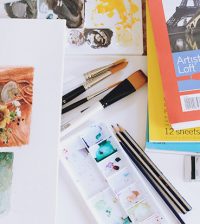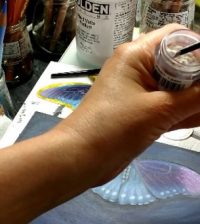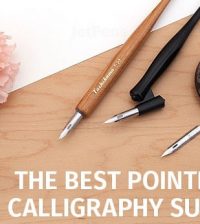The Artist’s Toolbox: Essential Supplies for Every Creator
Art is a means of expression, allowing people to show their emotions without having to utter a single word. It’s a language spoken through colours, lines, and textures. Whether you’re a seasoned professional or a newbie just starting your creative journey, you should know that art needs more than talent. Of course, talent is crucial, but having the right tools can make all the difference in bringing your imagination to life. That’s why we are going to explore some of the essential supplies that every artist should have in their arsenal.
Pastel Pencils

One of the most used and beloved tools for every artist is coloured pastel pencils for the vibrant colours they come in, and their versatility. They come in a wide range of colours, from soft pastels to vibrant hues, allowing you to create different artworks and express yourself in the best way possible.
What is a pastel pencil? These pencils are simple pastel material encased within a wooden shaft and because they are in pencil form they can be sharpened easily and used to make intricate details in a drawing. One of pastel pencils’ greatest strengths is their ability to blend seamlessly. Whether you’re layering colours to create depth or blending to achieve smooth traditions, pastel pencils offer unparalleled flexibility.
To blend the colours, you can use a variety of tools or even your fingers, depending on the desired effect. They are also ideal for creating fine details and intricate textures. Their sharpened tips allow precise lines making them ideal for drawing portraits, landscapes or still life. By varying pressure and stroke, you can achieve a wide range of effects from delicate details to bold, expressive lines.
They are very easy to use, just like a typical pencil. Using the side of the tip can produce broader marks while using the sharpened tip of the pencil will produce controlled lines. However, to produce a thick enough application to blend with a finger or a tool, several layers may be needed to achieve the desired result. The colours can be mixed and you can even create new ones by layering them on top of one another.
When working with pastel pencils, it’s essential to choose the right paper. Textured papers, such as pastel paper or sanded paper, provide the necessary grip, allowing for better blending and layering. Additionally, experimenting with different surfaces can give unique results and diverse artwork.
Tempera
Tempera paint is another great tool to create your artwork. This water-based paint has a thin, creamy consistency and a smooth matte finish and it’s ideal for any type of artwork. These colours are washable and they dry faster than other paints what’s great about them is that even after the pain dries you can add water and move the colours around. This allows you to add or remove something you don’t like in the painting. You can also mix the colours to create new ones and get the painting you want. Whether you’re painting on canvas, wood or paper, tempera offers vibrant colours when combined with smooth brushwork.
Watercolour
Watercolour is a great technique to use to create different paintings. Its transparency, luminosity and fluidity give you the liberty to combine, layer and apply more boldly the colours to create vibrant effects. What is great about them is that they are versatile and you can apply them to everything, from fabric and wood to stone, canvas and paper.
Chalk
Chalk, whether in stick or pastel form, offers you a versatile medium for creating bold and expressive artwork. With its soft and powdery texture, it can be applied directly to the paper or even used with water to create vibrant washes of colour. It’s well-suited for quick sketches, drawing and street art. Its ability to blend makes it ideal for capturing light and shadows, as well as adding texture and dimension to your pieces.
Brushes
Brushes are perhaps the most important tool in any artist’s arsenal. These tools allow you to control the movement and the amount of colour used while painting. They are available in a variety of shapes, sizes and materials and are used to achieve different effects, from fine lines to broad strokes. When you’re choosing the brushes, think about the type of surface you’ll be painting on, because different materials suit different surfaces.
Canvas

The foundation of your artwork is the canvas. It provides a durable and versatile surface for your paintings. Canvases are available in many sizes and shapes as well as different materials, and depending on the type of painting you want to make there’s a suitable canvas. The canvases can be stretched over wooden frames or mounted onto rigid panels or they can come rolled in a protective tube. The difference is that the stretched canvas is ready for display while the rolled one needs to be mounted before displaying.
The tools mentioned in this guide represent some of the essential supplies that every artist should have in their toolbox. Each of these tools offers you unique opportunities for expression and experimentation. Whether you’re a pro or just starting, having the right tools can make all the difference in bringing your vision to life.










